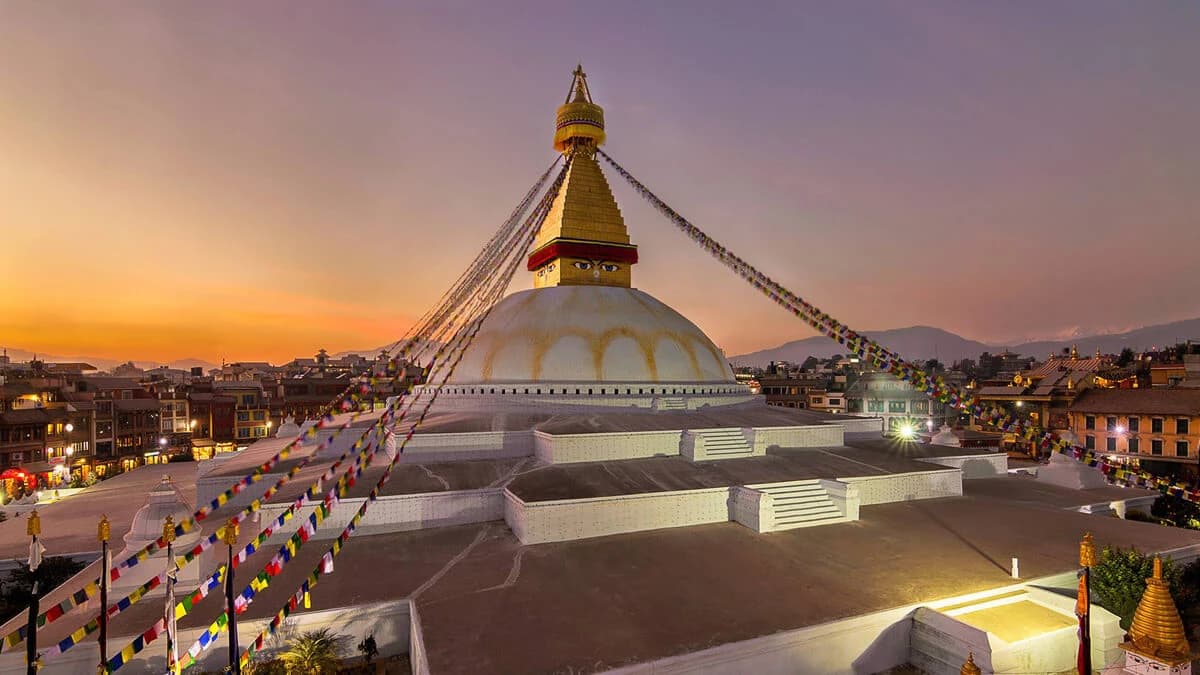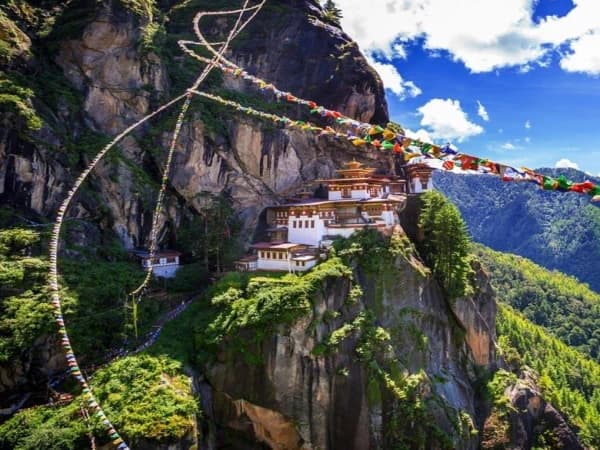Boudhanath Stupa, also known as Bouddhanath, Khasti Chaitya, and Khāsa Chaitya, is a magnificent stupa located in Kathmandu, Nepal. Let’s explore this iconic monument, its history, and its significance.
Visit to Boudhanath Stupa (Stupa in Kathmandu)
Historical Background
The first stupa at Boudhanath was built around AD 600, during the reign of Tibetan king Songtsen Gampo, who converted to Buddhism. Legend has it that the king constructed the stupa as an act of penance after unwittingly killing his father. The original stupa was destroyed by Mughal invaders in the 14th century, but the current one stands as a more recent construction1.
Architectural Marvel
Boudhanath’s massive mandala design makes it one of the largest spherical stupas in Nepal and the world. Its proportions are impeccable, from the whitewashed dome to the gilded tower adorned with the all-seeing eyes of the Buddha. The stupa’s symbolism is profound: the plinth represents earth, the kumbha (dome) is water, the harmika (square tower) symbolizes fire, the spire represents air, and the umbrella crowning the top signifies the void or ether beyond space. The 13 levels of the spire correspond to the stages a human being must pass through to achieve nirvana2.
Spiritual Significance
Boudhanath is a significant pilgrimage site for Buddhists worldwide. Tibetan merchants have rested and offered prayers here for centuries. Following the 1959 Tibetan uprising, a large number of Tibetan refugees migrated to Nepal and settled around Boudhanath. Over 50 gompas (Buddhist monasteries) now surround the stupa. It is believed that Boudhanath contains relics of either the past Buddha, Kashyapa, or a piece of bone from the historical Buddha, Siddhartha Gautama1.
Ritual Circumambulations
Join the Tibetan pilgrims during their morning and evening koras (circumambulations) around the stupa. The rhythmic movement of devotees spinning prayer wheels and chanting mantras creates an atmosphere of devotion and spirituality. The stupa’s energy is palpable during these rituals.
Prayer Wheels and Dhyani Buddhas
Around the base of Boudhanath, you’ll find 108 small images of the Dhyani Buddha Amitabha. This auspicious number holds significance in Tibetan culture. Additionally, there’s a ring of prayer wheels set into niches. To reach the upper level of the plinth, look for the gateway at the north end of the stupa. From there, you can observe the tide of pilgrims surging around the stupa, their full-length prostrations in the courtyard, and the devotion that permeates this sacred space2.
In summary, Boudhanath Stupa stands as a testament to Buddhist devotion, architectural brilliance, and the interconnectedness of spiritual seekers across cultures and time. Its serene presence continues to inspire and uplift all who visit this UNESCO World Heritage Site



.webp&w=1200&q=75&dpl=dpl_EbgeQs1w4UPUwnPAPCwZpToZ7rAt)

